#christ is risen
Text
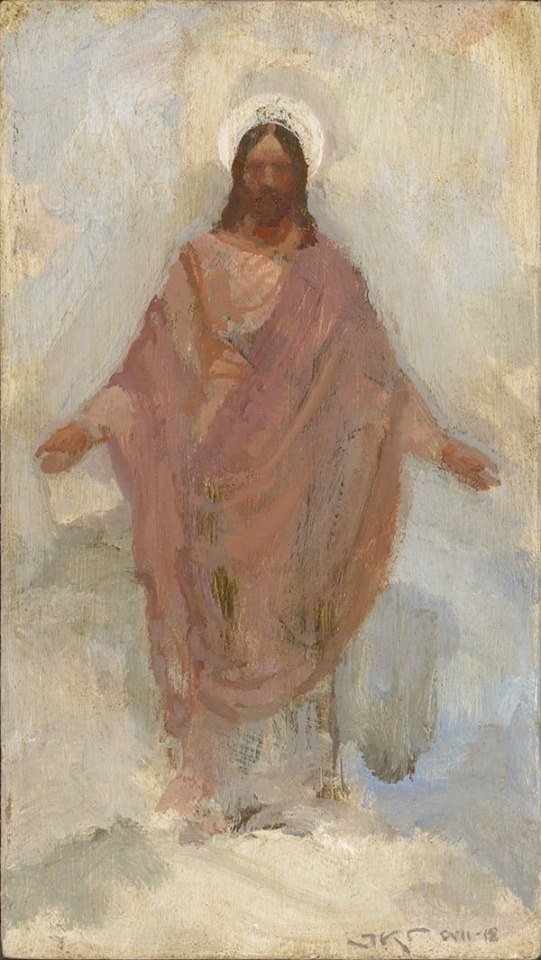

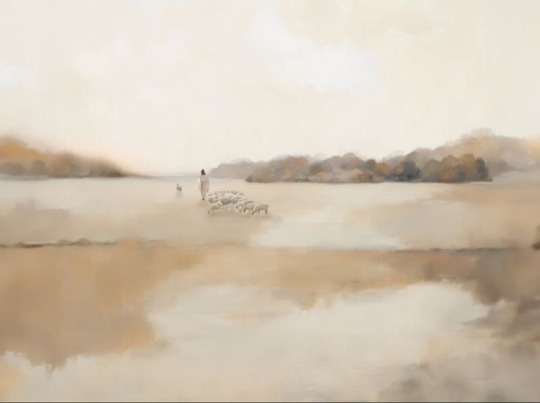



A little while, and you will see me no longer. Again in a little while, and you will see me.
John 16:16
#easter#easter sunday#holy week#lent 2024#Christ is risen#resurrection#jesus#quotes#bible quote#bible verse#catholic#Christian#orthodox#religious imagery#religious art#light moodboard#moodboard#oil painting#acrylic#poetry#books#philosophy#hopecore#aesthetic
1K notes
·
View notes
Text

Happy Easter.
120 notes
·
View notes
Text

“For we are God’s co-workers; you are God’s field. God’s building.”
1 Corinthians 3:9
#christianity#faith#christian#religion#theology#catholic#catholicism#spirituality#bible verse#1 corinthians#christian artist#christian art#catholic art#catholic priest#vintage art#christ is risen#christ is king#bible#bible reading#bible teaching#daily bible verse#daily bible study#bible study#biblical scripture#holy scripture#scripture#daily scripture#sacred scriptures#scripture of the day#scripture study
347 notes
·
View notes
Text

~Christ is Risen! Truly He is Risen~
The Appearance of Jesus Christ to Mary Magdalene after the Resurrection (detail), by Alexander Ivanov, 1835
#Easter#Resurrection#Christ is Risen#Pascha#saints#Mary Magdalene#I have seen the Lord#Jesus#Christian art
143 notes
·
View notes
Text
Alleluia! Christ is Risen!

67 notes
·
View notes
Text
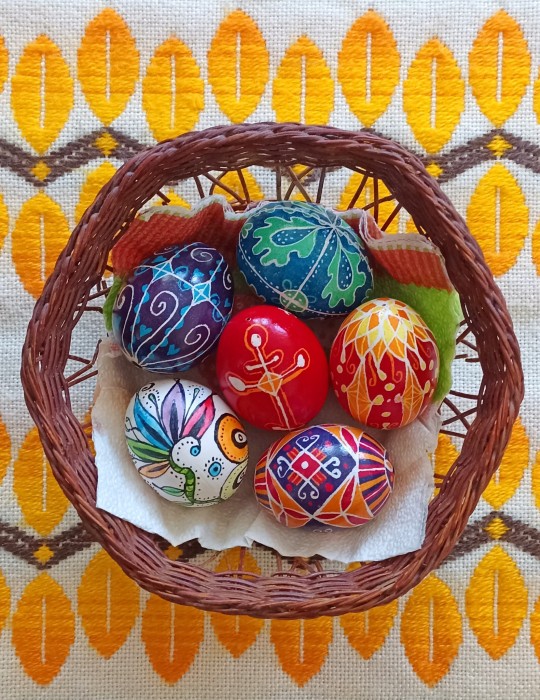
Христос Воскресе! I'm not having the best time this Easter but I won't be deterred from posting Egg 🩷❤️☦️🌿 Enjoy <3
05.05.24
#easter#orthodox easter#easter eggs#easter 2024#christ is risen#pysanky#bulgarian#(the previous tag always has ppl assuming im from ukraine)#писанки#великден#писани яйца
32 notes
·
View notes
Text
If Easter were only about bunnies, eggs, and chicks and candy... it would be the lamest holiday ever.
If Easter were just a celebration of the hope that Spring brings, it would be kinda forgettable.
But it's not! Easter is about Jesus defeating death! He took the punishment we deserved! He bore the wrath of God!God! He is not dead for He has risen! The tomb is empty! He offers us new life!
36 notes
·
View notes
Text
Christ is Risen! Happy Pascha!
Christ is Risen from the dead,
trampling down, death by death,
and on those in the tombs bestowing life!
23 notes
·
View notes
Text
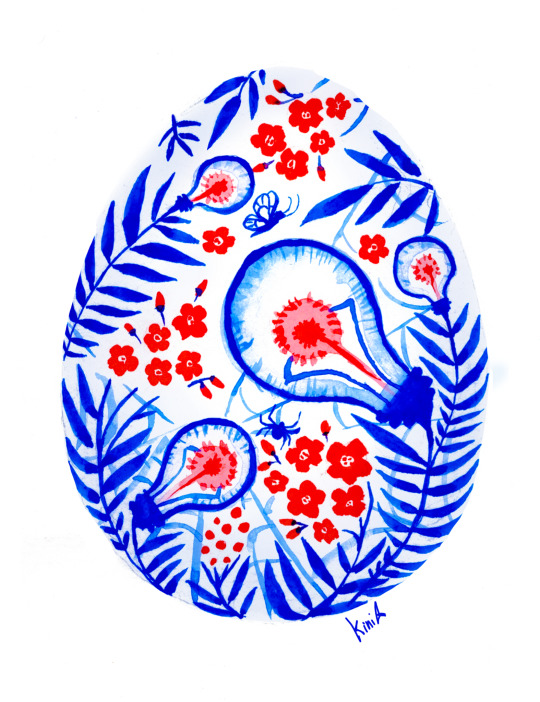
Who's in the egg?
Happy Easter everyone!
19 notes
·
View notes
Text
Of the many images of Him, this is perhaps my favorite.
I don't know who the artist is.
Из множества Его изображений, это, пожалуй, самое любимое.
Не знаю, кто художник.
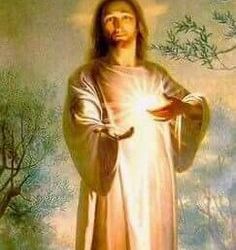
#Jesus#Jesus Christ#Christ is Risen#Savior#God#Christianity#Christian#orthodox#Easter#holy#holiness#Saint#bright#light#love#sunny#radiant#Иисус#Иисус Христос#Христос Воскрес#Спаситель#Бог#христианство#Пасха#светлый#свет#любовь#свет любви#лучезарный#радостный
10 notes
·
View notes
Text



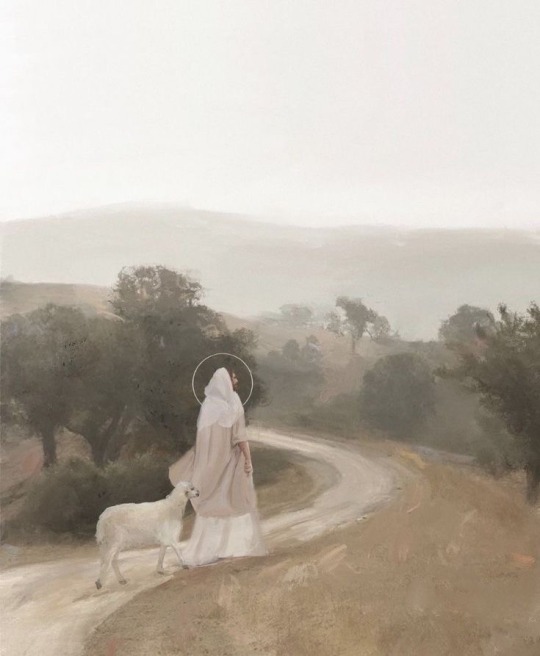
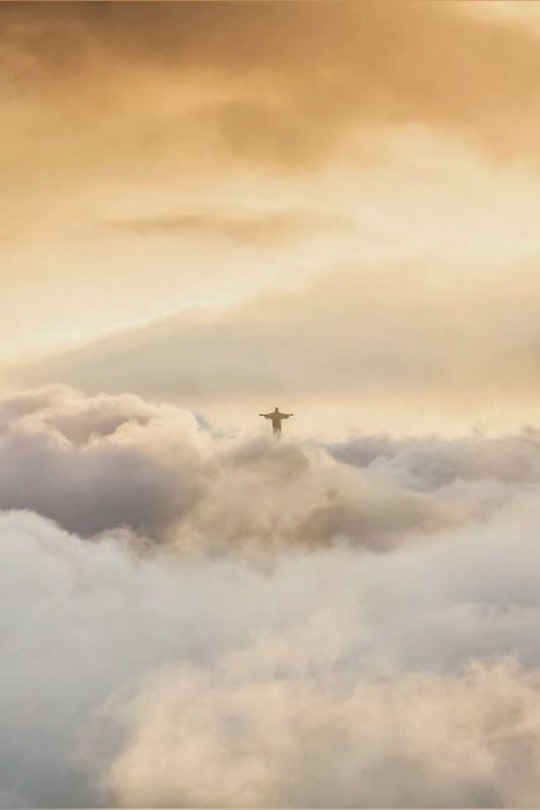

I came from the father and have come into the world, and now I am leaving the world and going to the father.
John 16:28
#ascension#feast of the ascension#Catholic#orthodox#liturgy#religious imagery#religious art#Jesus#Easter#lent#resurrection#god#bible quote#bible verse#aesthetic#light moodboard#moodboard#pinterest#inspiration#quotes#philosophy#art#Pentecost#christ is risen#Christian#ascension day#mothers day
14 notes
·
View notes
Text
Christ is risen; tell everyone!
Orthodox Christians celebrate Easter today. For the next 40 days, we greet each other with the most important news anyone has ever shared
Christ is Risen! Χριστὸς ἀνέστη
and the faithful respond
Truly He is Risen! Ἀληθῶς ἀνέστη!
Abkhazian – Kyrsa Dybzaheit! Itzzabyrgny Dybzaheit!
Afrikaans – Christus het opgestaan! Hy het waarlik opgestaan!
Albanian (Tosk) – Krishti u ngjall! Vërtet u ngjall!
Aleut – Kristus aq ungwektaq! Pichinuq ungwektaq!
Amharic – (Kristos Tenestwal! Bergit Tenestwal!)
Arabic (standard) – المسيح قام! حقا قام! (al-Masīḥ qām! Ḥaqqan qām!) or المسيح قام! بالحقيقة قام! (al-Masīḥ qām! Bi-l-ḥaqīqati qām!)
Armenian – Քրիստոս յարեա՜ւ ի մեռելոց: Օրհնեա՜լ է Յարութիւնն Քրիստոսի: (western dialect: Krisdos haryav i merelotz! Orhnyal e Haroutyunen Krisdosi!) Քրիստոս հարյա՜վ ի մեռելոց: Օրհնյա՜լ է Հարությունը Քրիստոսի: (eastern dialect: Khristos haryav i merelotz! Orhnyal e Harouthyoune Khristosi!) – (Lit: Christ is risen! Blessed is the resurrection of Christ!)
Aromanian – Hristolu unghia! Daleehira unghia!
Azeri – Məsih dirildi! Həqiqətən dirildi!
Basque – Cristo Berbiztua! Benetan Berbiztua!
Belarusian – Хрыстос уваскрос! Сапраўды ўваскрос! (Chrystos uvaskros! Sapraŭdy ŭvaskros!)
Breton – Dassoret eo Krist! E wirionez dassoret eo!
Bulgarian – Христос възкресе! Наистина възкресе! (Hristos vâzkrese! Naistina vâzkrese!) or in Church Slavonic: Христос воскресе! Воистину воскресе! (Hristos voskrese! Voistinu voskrese!)
Carolinian – Lios a melau sefal! Meipung, a mahan sefal!
Catalan – Crist ha ressuscitat! Veritablement ha ressuscitat!
Cebuano – Si Kristo nabanhaw! Matuod nga Siya nabanhaw!
Chamorro – La’la’i i Kristo! Magahet na luma’la’ i Kristo!
Church of England – Alleluia! Christ is Risen! He is risen indeed! Alleluia![3]
Chuvash – Христос чĕрĕлнĕ! Чăн чĕрĕлнĕ! (Khristós chərəlnə! Chæn chərəlnə!)
Coptic (Bohairic) – ΠιχρίςΤος αϥτωΝϥ! ϦΕΝ οΥΜεθΜΗι αϥτωΝϥ! (Pi’Christos aftonf! Khen oumetmi aftonf!)
Cornish – Thew Creest dassorez! En weer thewa dassorez!
Croatian – Krist uskrsnu! Uistinu uskrsnu!
Czech – Kristus vstal z mrtvých! Vpravdě vstal z mrtvých!
Danish – Kristus er opstanden! Sandelig Han er Opstanden!
Dothraki – Khal Asvezhvenanaz yathoay! Me Yathoay Me nem nesa!
Dovahzul – Saviik los alok! Rok los vahzah alok!
Dutch – Christus is opgestaan! Hij is waarlijk opgestaan! (Netherlands) or Christus is verrezen! Hij is waarlijk verrezen! (Belgium)
English – “Christ is risen! Truly, He is risen!” or “Christ is risen! Indeed, He is risen!” or “He [or ‘The LORD’] is risen! He [or ‘The LORD’] is risen indeed!” or “Christ has risen! Indeed, He has!” or “Christ is risen! He is risen, indeed!”
Esperanto – Kristo leviĝis! Vere Li leviĝis!
Estonian – Kristus on üles tõusnud! Tõesti, Ta on üles tõusnud!
Fijian – Na Karisito tucake tale! Io sa tucake tale!
Filipino – Si Kristo ay nabuhay! Totoo, Siya nga ay nabuhay!
Finnish – Kristus nousi kuolleista! Totisesti nousi!
French – Le Christ est ressuscité! En verité il est ressuscité! or Le Christ est ressuscité! Vraiment il est ressuscité!
Frisian – Kristus is opstien! Wis is er opstien!
Galician -Cristo resucitou! De verdade resucitou!
Ganda – Kristo Ajukkide! Kweli Ajukkide!
Georgian – ქრისტე აღსდგა! ჭეშმარიტად აღსდგა! (Kriste aghsdga! Cheshmaritad aghsdga!)
German – Christus (or: Der Herr) ist auferstanden! Er ist wahrhaft (or: wahrhaftig) auferstanden!
Gikuyu – Kristo ni muriuku! Ni muriuku nema!
Greek – Χριστὸς ἀνέστη! Ἀληθῶς ἀνέστη!
Hawaiian – Ua ala aʻe nei ʻo Kristo! Ua ala ʻiʻo nō ʻo Ia!
Hebrew (modern) – המשיח קם! באמת קם! (Hameshiach qam! Be’emet qam!)
Hindustani – येसु मसीह ज़िन्दा हो गया है! हाँ यक़ीनन, वोह ज़िन्दा हो गया है! – یسوع مسیح زندہ ہو گیا ہے! ہاں یقیناً، وہ زندہ ہو گیا ہے! (Yesu Masih zinda ho gaya hai! Haan yaqeenan, woh zinda ho gaya hai!)
Hungarian – Krisztus feltámadt! Valóban feltámadt!
Icelandic – Kristur er upprisinn! Hann er sannarlega upprisinn!
Ido – Kristo riviveskabas! Ya Il rivivesakabas!
Indonesian – Kristus telah bangkit! Dia benar-benar telah bangkit!
Interlingua – Christo ha resurgite! Vermente ille ha resurgite! or Christo ha resurrecte! Vermente ille ha resurrecte!
Irish – Tá Críost éirithe! Go deimhin, tá sé éirithe!
Italian – Cristo è risorto! È veramente risorto!
Japanese – ハリストス復活!実に復活! (Harisutosu fukkatsu! Jitsu ni fukkatsu!)
Kapampangan – Y Cristo sinubli yang mebie! Sinubli ya pin mebie!
Khmer – Preah Christ mean preah choan rous leong vinh! trung mean preah choan rous leong vinh men!
Klingon – Hu’ta’ QISt! Hu’bejta’!
Korean – 그리스도 부활하셨네! 참으로 부활하셨네! (Geuriseudo Buhwalhasheotne! Chameuro Buhwalhasheotne!)
Latin – Christus resurrexit! Resurrexit vere!
Latvian – Kristus (ir) augšāmcēlies! Patiesi viņš ir augšāmcēlies!
Lithuanian – Kristus prisikėlė! Tikrai prisikėlė!
Macedonian
Malagasy – Nitsangana tamin’ny maty i Kristy! Nitsangana marina tokoa izy!
Malayalam – ക്രിസ്തു ഉയിര്ത്തെഴുന്നേറ്റു! തീര്ച്ചയായും ഉയിര്ത്തെഴുന്നേറ്റു! (Christu uyirthezhunnettu! Theerchayayum uyirthezhunnettu!
Maltese – Kristu qam! Huwa qam tassew! or Kristu qam mill-mewt! Huwa qam tassew!
Mandarin – 基督復活了! 他確實復活了! (Jidu fuhuo-le! Ta queshi fuhuo-le!)
Manx – Taw Creest Ereen! Taw Shay Ereen Guhdyne!
Marathi – Yeshu Khrist uthla ahe! Kharokhar uthla ahe!
Middle English – Crist is arisen! Arisen he sothe!
Navajo – Christ daaztsą́ą́dę́ę́ʼ náádiidzáá! Tʼáá aaníí daaztsą́ą́dę́ę́ʼ náádiidzáá!
Neo-Syriac – ܡܫܝܚܐ ܩܡܠܗ! ܒܗܩܘܬܐ ܩܡܠܗ! (Mshikha qimlih! bhāqota qimlih!)
Norwegian Bokmål – Kristus er oppstanden! Han er sannelig oppstanden!
Norwegian Nynorsk – Kristus er oppstaden! Han er sanneleg oppstaden!
Old English – Crist aras! Crist soþlice aras! (Lit: Christ arose! Christ surely arose!)
Old Irish – Asréracht Críst! Asréracht Hé-som co dearb!
Persian – مسیح برخاسته است! به راستی برخاسته است! (Masih barkhaste ast! Be rasti barkhaste ast!)
Polish – Chrystus zmartwychwstał! Prawdziwie zmartwychwstał!
Portuguese – Cristo ressuscitou! Em verdade ressuscitou! or Cristo ressuscitou! Ressuscitou verdadeiramente!
Quechua – Cristo causarimpunña! Ciertopuni causarimpunña!
Quenya – (Hristo Ortane! Anwave Ortanes!)
Rastafarian – Krestos a uprisin! Seen, him a uprisin fe tru!
Romanian – Hristos a înviat! Adevărat a înviat!
Romansh – Cristo es rinaschieu! In varded, el es rinaschieu!
Russian – Христос воскрес! Воистину воскрес! (Christos voskres! Voistinu voskres!)
Rusyn – Хрістос воскрес! Воістину воскрес! (Hristos voskres! Voistynu voskres!)
Sardinian – Cristu est resuscitadu! Aberu est resuscitadu!
Scottish – Tha Crìosd air èiridh! Gu dearbh, tha e air èiridh!
Serbian – Христос васкрсе! Ваистину васкрсе! / Hristos vaskrse! Vaistinu vaskrse! (Christos vaskrse! Vaistinu vaskrse!) or Христос воскресе! Ваистину воскресе! / Hristos voskrese! Vaistinu voskrese! (Christos voskrese! Vaistinu voskrese!)
Sicilian – Cristu arrivisciutu esti! Pibbiru arrivisciutu esti!
Slovak – Kristus vstal z mŕtvych! Skutočne vstal (z mŕtvych)! (although the Church Slavonic version is more often used: Christos voskrese! Voistinu voskrese!)
Slovenian – Kristus je vstal! Zares je vstal!
Spanish – ¡Cristo resucitó! ¡En verdad resucitó!
Swahili – Kristo Amefufukka! Kweli Amefufukka!
Swedish – Kristus är uppstånden! Han är sannerligen uppstånden!
Syriac – ܡܫܝܚܐ ܩܡ! ܫܪܝܪܐܝܬ ܩܡ! (Mshiḥa qām! sharīrāīth qām! or Mshiḥo Qom! Shariroith Qom!)
Tamil – கிறிஸ்து உயிர்த்தெழுந்தார், மெய்யாகவே அவர் உயிர்த்தெழுந்தார்.
The Episcopal Church – Alleluia. Christ is Risen. The Lord is risen indeed. Alleluia.[4]
Tigrigna – (Christos tensiou! Bahake tensiou!)
Tlingit – Xristos Kuxwoo-digoot! Xegaa-kux Kuxwoo-digoot!
Toki Pona – jan sewi Kolisu li tawa tan moli! ni li lon: ona li tawa tan moli!
Traditional (as per Church Slavonic) – Христос воскресе! Навистина воскресе! (Hristos voskrese! Navistina voskrese!)
Turkish – Mesih dirildi! Hakikaten dirildi!
Turoyo-Syriac – ܡܫܝܚܐ ܩܝܡ! ܫܪܥܪܐܝܬ ܩܝܡ! (Mshiḥo qāyem! Shariroith qāyem!)
Tzeltal – Cha’kuxaj Kajwaltik Kristo! Ta melel cha’kuxaj!
Tzotzil – Icha’kuxi Kajvaltik Kristo! Ta melel icha’kuxi!
Ukrainian – Христос воскрес! Воістину воскрес! (Khrystos voskres! Voistynu voskres!)
Uyghur – ئەيسا تىرىلدى! ھەقىقەتىنلا تىرىلدى! (Əysa tirildi! Ⱨəⱪiⱪətinla tirildi!)
Uzbek – Масих тирилди! Хақиқатдан тирилди! (Masih tirildi! Haqiqatdan tirildi!)
Vernacular – Христос воскресна! Навистина воскресна! (Hristos voskresna! Navistina voskresna!)
Vietnamese – Chúa ki-tô đã phục sinh! qu̓a thật ngài đã phục sinh!
Walloon – Li Crist a raviké! Il a raviké podbon!
Waray – Hi Kristo nabanwaw! Matuod nga Hiya nabanhaw!
Welsh – Atgyfododd Crist! Yn wir atgyfododd!
Yupik languages – Xris-tusaq Ung-uixtuq! Iluumun Ung-uixtuq!
71 notes
·
View notes
Text

The Birth of Christ by Burmese artist Kyaw Phyu San
#christianity#christian#faith#religion#theology#Christian art#Christian artist#nativity#nativity scene#birth of christ#christ is risen#catholic#catholicism#biblical art
118 notes
·
View notes
Text
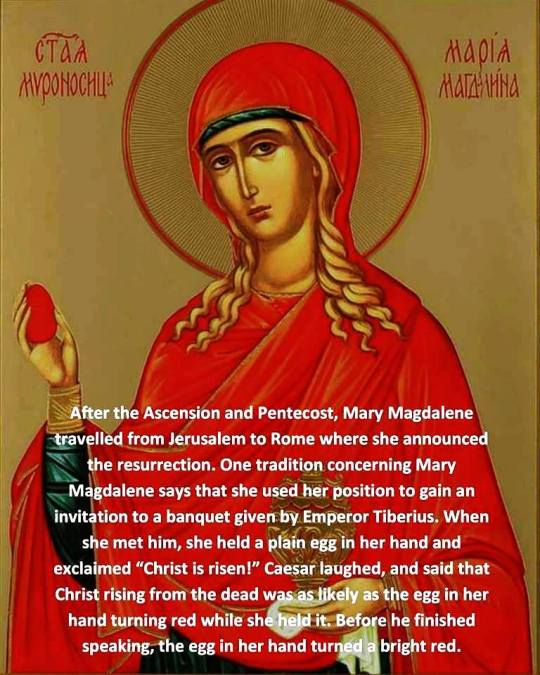
~Christ is Risen! Truly He is Risen~
#Christ is Risen#Orthodox Christian#saints#Mary Magdalene#red egg#resurrection#Lord Jesus#Pascha#Easter#Caesar#miracle
35 notes
·
View notes
Text

Христос Воскресе и Честит Великден! Happy Orthodox Easter, enjoy this year's eggos ☦️🪺💕
115 notes
·
View notes
Text
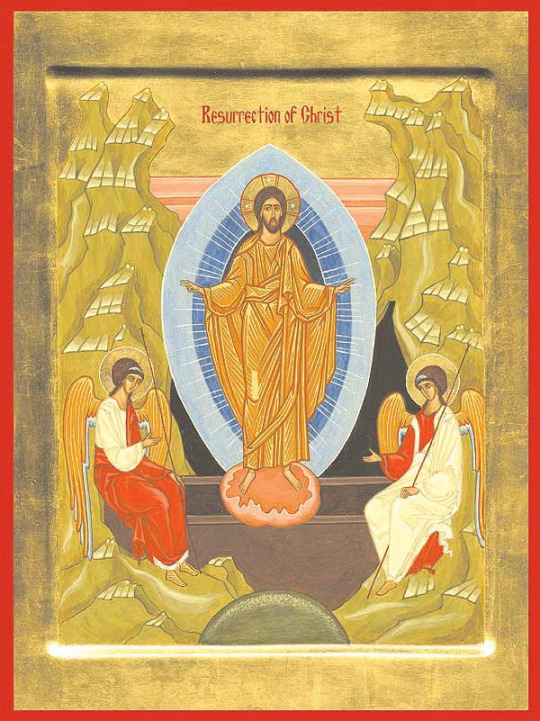
HOLY PASCHA: The Resurrection of Our Lord
Commemorated on May 5
Pascha (Easter)
Enjoy ye all the feast of faith; receive ye all the riches of loving-kindness.
(Sermon of Saint John Chrysostom, read at Paschal Matins)
The resurrection of Jesus Christ from the dead is the center of the Christian faith. Saint Paul says that if Christ is not raised from the dead, then our preaching and faith are in vain (I Cor. 15:14). Indeed, without the resurrection there would be no Christian preaching or faith. The disciples of Christ would have remained the broken and hopeless band which the Gospel of John describes as being in hiding behind locked doors for fear of the Jews. They went nowhere and preached nothing until they met the risen Christ, the doors being shut (John 20: 19). Then they touched the wounds of the nails and the spear; they ate and drank with Him. The resurrection became the basis of everything they said and did (Acts 2-4): “. . . for a spirit has not flesh and bones as you see that I have” (Luke 24:39).
The resurrection reveals Jesus of Nazareth as not only the expected Messiah of Israel, but as the King and Lord of a new Jerusalem: a new heaven and a new earth.
Then I saw a new heaven and a new earth. . . the holy city, new Jerusalem. And I heard a great voice from the throne saying “Behold, the dwelling place of God is with men. He will dwell with them, and they shall be his people. . . He will wipe away every tear from their eyes, and death shall be no more, neither shall there be mourning nor crying nor pain any more, for the former things have passed away (Rev. 21:1-4).
In His death and resurrection, Christ defeats the last enemy, death, and thereby fulfills the mandate of His Father to subject all things under His feet (I Cor. 15:24-26).
Worthy is the Lamb who was slain, to receive power and wealth and wisdom and might and honor and glory and blessing (Rev. 5: 12)
THE FEAST OF FEASTS
The Christian faith is celebrated in the liturgy of the Church. True celebration is always a living participation. It is not a mere attendance at services. It is communion in the power of the event being celebrated. It is God’s free gift of joy given to spiritual men as a reward for their self-denial. It is the fulfillment of spiritual and physical effort and preparation. The resurrection of Christ, being the center of the Christian faith, is the basis of the Church’s liturgical life and the true model for all celebration. This is the chosen and holy day, first of sabbaths, king and lord of days, the feast of feasts, holy day of holy days. On this day we bless Christ forevermore (Irmos 8, Paschal Canon).
PREPARATION
Twelve weeks of preparation precede the “feast of feasts.” A long journey which includes five prelenten Sundays, six weeks of Great Lent and finally Holy Week is made. The journey moves from the self-willed exile of the prodigal son to the grace-filled entrance into the new Jerusalem, coming down as a bride beautifully adorned for her husband (Rev. 21:2) Repentance, forgiveness, reconciliation, prayer, fasting, almsgiving, and study are the means by which this long journey is made.
Focusing on the veneration of the Cross at its midpoint, the lenten voyage itself reveals that the joy of the resurrection is achieved only through the Cross. “Through the cross joy has come into all the world,” we sing in one paschal hymn. And in the paschal troparion, we repeat again and again that Christ has trampled down death—by death! Saint Paul writes that the name of Jesus is exalted above every name because He first emptied Himself, taking on the lowly form of a servant and being obedient even to death on the Cross (Phil. 2:5-11). The road to the celebration of the resurrection is the self-emptying crucifixion of Lent. Pascha is the passover from death to life.
Yesterday I was buried with Thee, O Christ.
Today I arise with Thee in Thy resurrection.
Yesterday I was crucified with Thee:
Glorify me with Thee, O Savior, in Thy kingdom (Ode 3, Paschal Canon).
THE PROCESSION
The divine services of the night of Pascha commence near midnight of Holy Saturday. At the Ninth Ode of the Canon of Nocturn, the priest, already vested in his brightest robes, removes the Holy Shroud from the tomb and carries it to the altar table, where it remains until the leave-taking of Pascha. The faithful stand in darkness. Then, one by one, they light their candles from the candle held by the priest and form a great procession out of the church. Choir, servers, priest and people, led by the bearers of the cross, banners, icons and Gospel book, circle the church. The bells are rung incessantly and the angelic hymn of the resurrection is chanted.
The procession comes to a stop before the principal doors of the church. Before the closed doors the priest and the people sing the troparion of Pascha, “Christ is risen from the dead...”, many times. Even before entenng the church the priest and people exchange the paschal greeting: “Christ is risen! Indeed He is risen!” This segment of the paschal services is extremely important. It preserves in the expenence of the Church the primitive accounts of the resurrection of Christ as recorded in the Gospels. The angel rolled away the stone from the tomb not to let a biologically revived but physically entrapped Christ walk out, but to reveal that “He is not here; for He has risen, as He said” (Matt. 28:6).
In the paschal canon we sing:
Thou didst arise, O Christ, and yet the tomb remained sealed, as at Thy birth the Virgin’s womb remained unharmed; and Thou has opened for us the gates of paradise (Ode 6).
Finally, the procession of light and song in the darkness of night, and the thunderous proclamation that, indeed, Christ is risen, fulfill the words of the Evangelist John: “The light shines in darkness, and the darkness has not overcome it” (John 1:5).
The doors are opened and the faithful re-enter. The church is bathed in light and adorned with flowers. It is the heavenly bride and the symbol of the empty tomb:
Bearing life and more fruitful than paradise
Brighter than any royal chamber,
Thy tomb, O Christ, is the fountain or our resurrection (Paschal Hours).
MATINS
Matins commences immediately. The risen Christ is glorified in the singing of the beautiful canon of Saint John of Damascus. The paschal greeting is repeatedly exchanged. Near the end of Matins the paschal verses are sung. They relate the entire narrative of the Lord’s resurrection. They conclude with the words calling us to actualize among each other the forgiveness freely given to all by God:
This is the day of resurrection.
Let us be illumined by the feast.
Let us embrace each other.
Let us call “brothers” even those who hate us,
And forgive all by the resurrection. . .
The sermon of Saint John Chrysostom is then read by the celebrant. The sermon was originally composed as a baptismal instruction. It is retained by the Church in the paschal services because everything about the night of Pascha recalls the Sacrament of Baptism: the language and general terminology of the liturgical texts, the specific hymns, the vestment color, the use of candles and the great procession itself. Now the sermon invites us to a great reaffirmation of our baptism: to union with Christ in the receiving of Holy Communion.
If any man is devout and loves God, let him enjoy this fair and radiant triumphal feast. . . the table is fully laden; feast you all sumptuously. . . the calf is fatted, let no one go hungry away. . .
THE DIVINE LITURGY
The sermon announces the imminent beginning of the Divine Liturgy. The altar table is fully laden with the divine food: the Body and Blood of the risen and glorified Christ. No one is to go away hungry. The service books are very specific in saying that only he who partakes of the Body and Blood of Christ eats the true Pascha. The Divine Liturgy, therefore, normally follows immediately after paschal Matins. Foods from which the faithful have been asked to abstain during the lenten journey are blessed and eaten only after the Divine Liturgy.
THE DAY WITHOUT EVENING
Pascha is the inauguration of a new age. It reveals the mystery of the eighth day. It is our taste, in this age, of the new and unending day of the Kingdom of God. Something of this new and unending day is conveyed to us in the length of the paschal services, in the repetition of the paschal order for all the services of Bright Week, and in the special paschal features retained in the services for the forty days until Ascension. Forty days are, as it were, treated as one day. Together they comprise the symbol of the new time in which the Church lives and toward which she ever draws the faithful, from one degree of glory to another.
O Christ, great and most holy Pascha.
O Wisdom, Word and Power of God,
grant that we may more perfectly partake of Thee in the never-ending day of Thy kingdom
(Ninth Ode, Paschal Canon).
The V. Rev. Paul Lazor
New York, 1977
7 notes
·
View notes